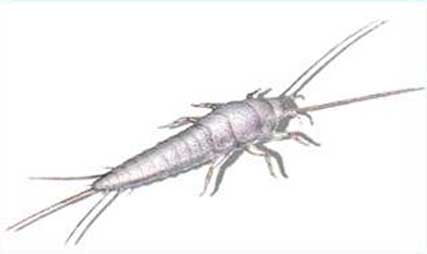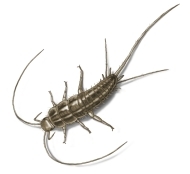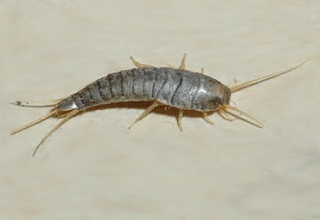

Silverfish Bugs
learn how to prevent, control and exterminate silverfish


learn how to prevent, control and exterminate silverfish
Silverfish will chew through virtually anything in a home that has sugar and starch content. Despite the fact that they will eat a good portion of the objects in your home, you shouldn't worry about your personal safety because they do not bite humans. Silverfish are often mistaken for centipedes in homes because of their long abdomens. Centipedes are an insect that are known to bite humans. If you are unsure about whether you have discovered a centipede or a silverfish bug, count the legs. You will notice that the silverfish only has six legs.
Silverfish typically eat sugars and starches that are found naturally in the wild, but can be destructive when they get into the home. They will eat through any paper, book bindings, sugars and coffee that they come across and have even been known to feast on clothes in closets. Because they are able to quickly multiply, it can be hard to get rid of them once they are in your home. Because they also eat glue, silverfish are known for attempting to eat various glues and pastes that are used to attach wallpaper to walls, which can do damage to the wall itself.

Silverfish are only able to survive in damp areas and require at least 75% humidity to survive. In the wild, they live alongside creeks and streams. In the home, they will seek out any damp environment that will support them. The common areas of the home that they will inhabit include basements, bathrooms, closets and cupboards. The most common areas of the home to find Silverfish in will usually also have objects that they can eat. Since basements are often full of paper materials and books, they are most commonly found in basements. This also poses a problem because many people do not regularly look through their basement and an infestation of silverfish can go largely undetected until it is too late and they have infested the entire home. If you are worried about silverfish infestation throughout your home, try looking through damp areas of the home that contain objects that they would be able to survive on. When you discover your first silverfish bug in your home, it is important that you move anything that they could potentially eat to the dry areas of the home to ensure that they do not find food in a suitable environment.
They are able to fit through cracks and climb into small spaces, which can make it hard to locate them unless you catch them at their food source. They can easily slip between cracks in cupboards, underneath bathtubs and into other damp, dimly lit locations. If you are attempting to get rid of a silverfish infestation in your home, it is important that you thoroughly search all of the cracks and crevices that they could potentially climb into. Also, remember that just because you are not able to visibly find any silverfish bugs in your home doesn't mean that they are still there. In fact, if you find silverfish damage to books and other items they are likely still in the home. They make a habit out of hiding in the dark, and you may have to take additional steps to exterminate and further prevent the infestation of your home.
You might think that stink bugs are harmless, but read stink bug facts to learn more about them.